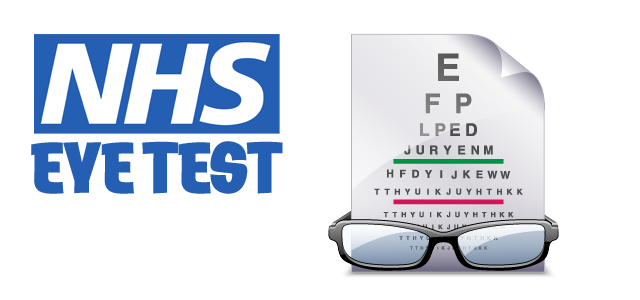![]()
Jack Brown Eyecare, Edinburgh Opticians.
Email: info@jbeyecare.com
Jack Brown Eyecare Branches
30 Elder Street, Edinburgh EH1 3DX
Tel: 0131 557 3531
Open in Google Maps
Westside Plaza, Edinburgh EH14 2SW
Tel: 0131 442 2333
Open in Google Maps

What is Coloboma?
Coloboma describes a situation where the patient has a portion of the structure of the eye lacking. This gap can occur in a range of areas and be large or small.
The most common form of gap is caused by an imperfect closure of a cleft, present in the womb but usually closed by birth date. This gap can occur in the eyelid, iris, lens, choroid or optic disc. In some cases other developmental flaws accompany it.
- The eyelid is the eye's first line of defence and when danger is sensed the lids automatically close.
- The iris forms a pigmented curtain dividing the cornea and the lens and gives colour to the eye as well as controlling the amount of light entering the eye, by varying the size of the pupil.
- The lens is the transparent intraocular tissue forming the natural lens of the eye, helping to bring rays of light to focus on the retina.
- The retina is located at the back of the eye and forms a light-sensitive screen made up of several cell layers. When light reaches the retina it is converted to nerve impulses which transmit the information to the brain.
- Essential nourishment of the retina is through a thin network of blood vessels called the choroid.
- The optic disc is the exit site from the eye of retinal nerve fibres, which carry the impulses for sight from the retina via the optic nerve to the brain.
What causes Coloboma?
Although no specific pattern has been identified there appears to be a strong hereditary factor in the incidence of this condition, which is sometimes linked to chromosomal disorders.
During the first three months of pregnancy, the eyes of the foetus are developing quickly, starting as a small bud which then sprouts out so that all the intricate parts of the inside of the eye can be formed and nourished. To aid this nourishment a gap, known as the foetal cleft, opens on the underside of each bud.
When the intricate development of the eye is completed, the gap closes but in some cases the gap either does not close or closes only partially and such gaps will remain throughout life. This gap is Coloboma. This does not mean that there is a hole in the eye, just that certain structures within the eye do not fully form.
Risk groups and risk factors
As in all cases of unexplained birth defects, it is as well to seek advice on potential family risks. Your GP or hospital eye specialist will be able to advise on local genetic services and counselling.
Effects of Coloboma
The effects of the condition can be mild or severe and this will depend upon the extent and location of the gap, or incomplete closure. The gap is usually at the bottom of the eye. Coloboma may occur in the iris/lens, choroid, macula or optic nerve.
A lens coloboma, if large, may also include flaws in the iris and choroid and slightly increase risk of retinal tearing. In severe cases, the eye may be reduced in size. This condition is called Microphthalmous, a condition that may arise without coloboma.
Coloboma of the iris may sometimes give the appearance of a keyhole in the pupil. Central vision may be affected and may reflect the extent, location and shape of the gap.
In some cases the problem may be accompanied by other problems which may be neurological or chromosomal. A few syndromes also include coloboma among the potential problems.
There is a specific combination of flaws identified by the acronym "CHARGE" which stands for:
C - Coloboma;
H - Heart defects;
A - Atresia of the choanae (blockage of the nasal passages);
R - Retarded growth and development;
G - Genital hypoplasia (undescended testes);
E - Ear anomalies
CHARGE is a very rare problem and will receive specialist attention and treatment from an early age.
Genetic implications
As with all inexplicable problems present at birth, it is important to seek genetic advice. Your GP or hospital eye specialist will be able to advise you about local genetic services and counselling.
Low Vision Services
Low Vision Services exist to optimise vision by the use of techniques, aids, lighting and general information. The eye specialist will be able to advise you on the nearest Low Vision Clinic within the Hospital Eye Service offering an equipment loan service.
Other Organisations
- CHARGE Association Family Support Group, 115 Boundary Road, Colliers Wood, London SW19 2DE (0181 540 2142).
- RNIB is not aware of a specialist group offering information on Coloboma although a range of services exists for people with serious sight loss and related problems.
- Contact a Family 020 7383 3555
- LOOK is an organisation that seeks to identify sight related support groups and put parents in contact. They have regional representatives. Their National Office can be reached on 0121 428 5038.
- Vision Aid is an organisation offering services for blind and partially sighted children which include information (including contact between families), pre-school and family support and specialised/educational aids and equipment. Vision Aid can be reached on 0204 31882.
- Afterwards is a charity providing counselling for disabled people, including serious sight loss. They can be reached on 0171 266 4311.
- The Partially Sighted Society, 62 Salusbury Road, London NW6 6NS, telephone 0171 372 1551, will be able to advise on Low Vision Services, lighting and aids.
There is a nationwide network of local voluntary organisations for people with serious sight loss and RNIB VALU will be happy to advise you on local support and services. RNIB Education Service is happy to discuss the ways in which children with severe sight problems can achieve their potential and to identify local support for families with visually impaired children.
text size >












